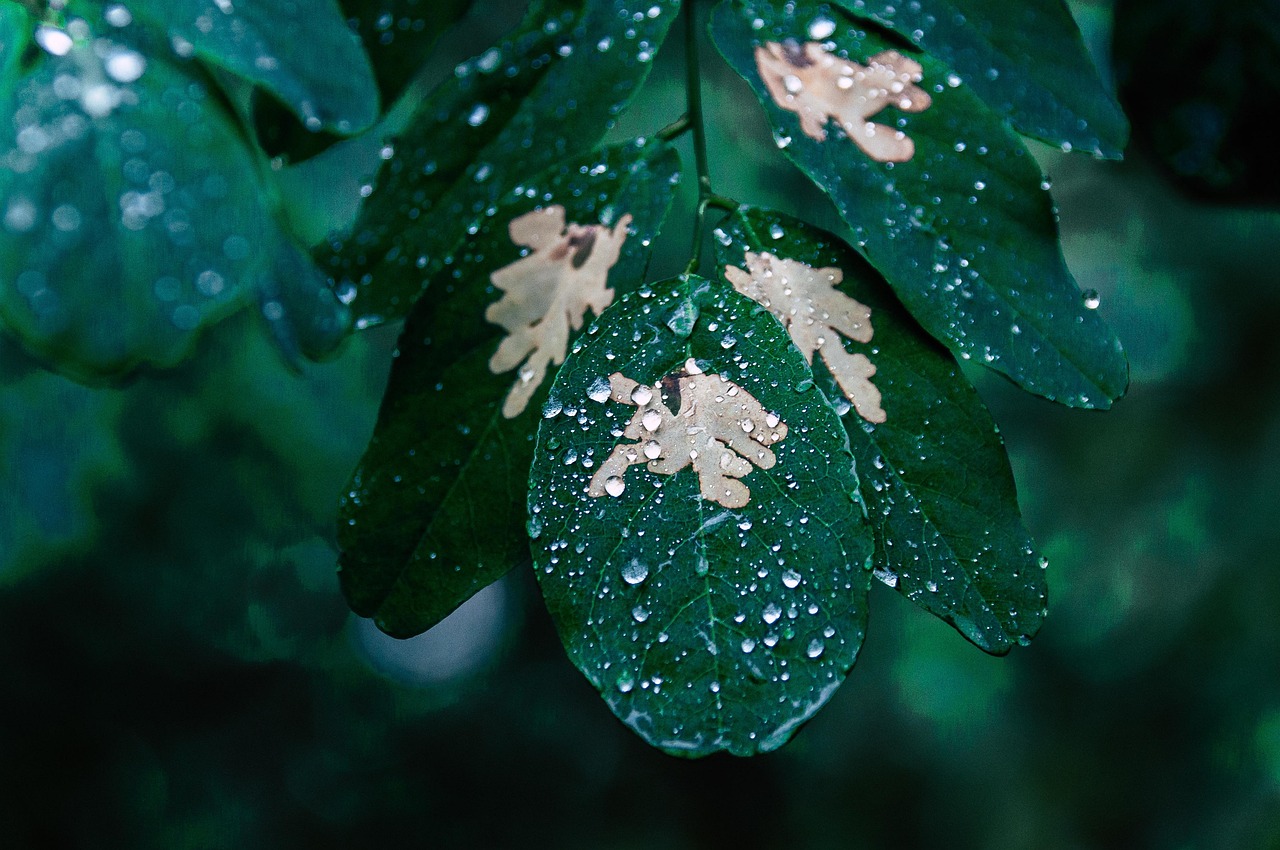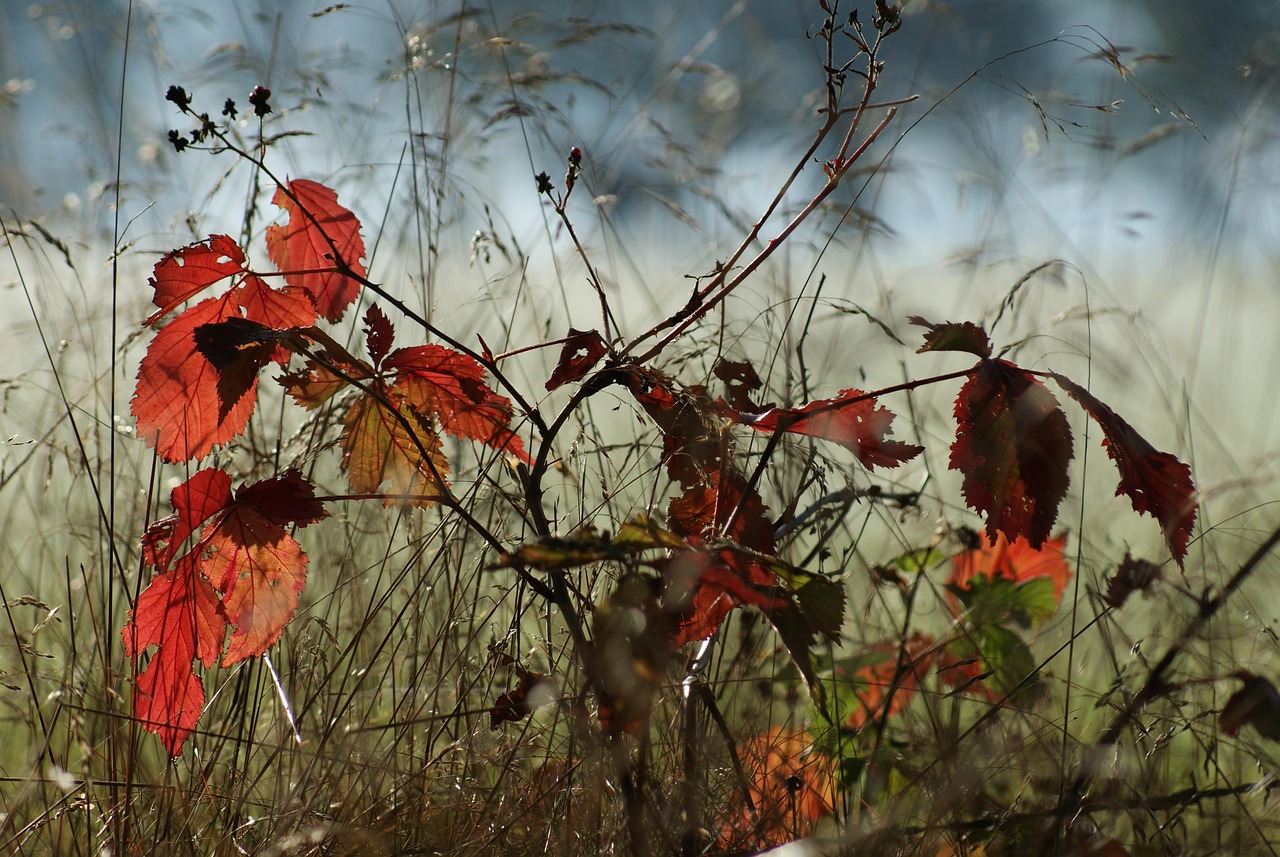Pruning the Golden Rain Tree enhances its natural beauty, promotes healthy growth, and keeps it well-shaped. With the right techniques, you can create a stunning focal point in your garden that showcases vibrant yellow flowers and lush green foliage.
The Golden Rain Tree, known scientifically as Koelreuteria paniculata, is a popular ornamental tree appreciated for its stunning summer blooms and attractive foliage. This deciduous tree can grow up to 30 feet tall and spreads just as wide, making it a perfect choice for large gardens or as a street-side planting. Its unique, bright yellow flowers appear in late summer, followed by decorative seed pods that persist into the fall. This visual appeal makes it a sought-after tree for enhancing garden aesthetics.

Proper pruning is essential to maintaining the health and beauty of the Golden Rain Tree. It not only shapes the tree but also encourages new growth, enhances flower production, and prevents disease. Understanding when and how to prune is crucial for achieving the best results.
Understanding the Growth Habit
The Golden Rain Tree has a rounded crown and produces long, arching branches. Its growth habit means that regular maintenance is necessary to ensure it does not become too dense or unmanageable. A well-pruned tree will have an open canopy that allows sunlight to penetrate, encouraging healthier foliage and flower development.
Generally, the best time to prune a Golden Rain Tree is during late winter or early spring, just before new growth begins. This timing allows you to remove any dead or diseased wood without interfering with the tree’s blooming cycle. Pruning at this time also helps shape the tree while minimizing stress on the plant.

Essential Pruning Techniques
To effectively prune your Golden Rain Tree, consider the following techniques:
- Thinning: Remove some of the older branches to improve airflow and light penetration within the canopy.
- Heading: Cut back branches to encourage bushier growth. This is particularly useful for maintaining a specific shape or size.
- Cleaning: Remove any dead, damaged, or diseased branches to promote overall health.
- Shaping: Trim the outer edges of the tree to maintain an attractive form and prevent it from becoming too wide.
Tools Needed for Pruning
Using the right tools will make the pruning process easier and more effective. Here are some essential tools you will need:
- Hand Pruners: Ideal for small branches and precise cuts.
- Loppers: Useful for cutting larger branches that are out of reach.
- Saw: A pruning saw can help with thicker branches that need removal.
- Gloves: Protect your hands from sharp edges and thorns.
Steps to Prune Your Golden Rain Tree
Follow these steps for effective pruning:

- Start by assessing the tree’s structure. Look for any dead or diseased branches.
- Use hand pruners to cut away smaller branches close to their base.
- For larger branches, use loppers or a saw. Make clean cuts at an angle to promote healing.
- Thin out crowded areas by removing select branches to enhance light exposure.
- Step back periodically to evaluate your work and ensure you are achieving your desired shape.
Benefits of Pruning
Pruning your Golden Rain Tree can lead to numerous benefits:
| Benefit | Description |
|---|---|
| Improved Airflow | Enhances light exposure and reduces the risk of disease. |
| Enhanced Flower Production | Encourages more blooms by promoting healthy growth. |
| Controlled Size | Makes it easier to manage the tree’s height and spread. |
| Aesthetic Appeal | Keeps the tree looking neat and attractive in your landscape. |
By following these guidelines, you can maintain a beautiful Golden Rain Tree that adds color and charm to your garden. Regular pruning not only supports its health but also enhances its striking appearance throughout the seasons.
Timing Your Pruning Efforts
Timing is crucial when it comes to pruning your Golden Rain Tree. The right season can make all the difference in how well the tree responds to pruning. Generally, late winter or early spring is considered the optimal time. During this period, the tree is still dormant, which minimizes stress and allows for healthy regrowth once spring arrives.

Pruning during dormancy prevents sap bleeding, a common issue with many trees when pruned in late spring or summer. Additionally, pruning at this time allows for better visibility of the tree’s structure, making it easier to identify branches that need attention.
Signs That It’s Time to Prune
Observing your Golden Rain Tree throughout the year can help you determine the best times to prune. Here are some signs that indicate it may be time to grab your tools:
- Dead or Diseased Branches: Look for branches that are brown, brittle, or show signs of fungal growth.
- Overcrowding: If branches are crossing or rubbing against each other, it’s time to thin them out.
- Size Management: If the tree has outgrown its space, consider a shaping prune.
- Aesthetic Changes: If the tree is losing its shape or becoming uneven, corrective pruning is necessary.
Advanced Pruning Techniques
Once you’re familiar with basic pruning methods, you may want to explore advanced techniques that can further enhance your tree’s aesthetics and health. These methods require a bit more knowledge but can yield impressive results.
Espalier Technique
The espalier technique involves training the tree to grow flat against a structure such as a wall or fence. This method is particularly useful in small gardens where space is limited. Follow these steps to create an espaliered Golden Rain Tree:
- Select a strong central leader branch to serve as the main trunk.
- Choose lateral branches and tie them to a trellis or framework at desired intervals.
- Regularly prune to maintain the flat shape, encouraging lateral growth over vertical growth.
Crown Reduction
Crown reduction is another advanced technique used to reduce the height of the tree while promoting healthy growth. This technique can be particularly useful for older trees that have grown too tall. Here’s how to perform crown reduction:
- Identify the Leader: Find the main leader branch and assess how much height needs to be reduced.
- Select Target Branches: Choose lateral branches below the leader to cut back, ensuring you select those that are healthy.
- Make Clean Cuts: Cut just above a lateral branch or bud, which will encourage new growth in the form of a more compact crown.
Common Mistakes to Avoid
While pruning can significantly improve your Golden Rain Tree’s aesthetics, there are common mistakes that can hinder its health and beauty. Being aware of these pitfalls can help you achieve the best results.
- Pruning Too Much: Avoid excessive pruning, which can stress the tree and lead to poor health.
- Improper Cuts: Making cuts too far from a branch collar can impede healing and encourage disease.
- Ignoring Shape: Don’t focus solely on removing dead wood; remember to shape the tree for balanced aesthetics.
- Pruning at the Wrong Time: Pruning in late spring or summer can lead to sap loss and weaken the tree.
Post-Pruning Care
After pruning, providing proper care is essential for recovery and growth. Here are some tips for post-pruning care:
- Watering: Ensure the tree receives adequate water, especially during dry spells following pruning.
- Mulching: Apply mulch around the base to retain moisture and suppress weeds.
- Pest Monitoring: Keep an eye out for pests that may be attracted to freshly cut wood.
- Nutrient Boosting: Consider applying a balanced fertilizer in spring to encourage robust regrowth.
Caring for your Golden Rain Tree after pruning helps ensure it thrives and continues to be a stunning focal point in your garden. By applying these practices, you can enjoy a vibrant and healthy landscape that showcases this beautiful tree’s full potential.
Identifying Common Pests and Diseases
The health of your Golden Rain Tree can be compromised by various pests and diseases. It is essential to identify these issues early to effectively manage them. By recognizing the signs of trouble, you can take proactive steps to protect your tree.
Common Pests
Several pests are known to afflict Golden Rain Trees. Here are some of the most common ones:
- Aphids: Small, soft-bodied insects that suck sap from the leaves, causing curling and yellowing.
- Scale Insects: These insects appear as small bumps on branches and leaves and can weaken the tree by siphoning off nutrients.
- Spider Mites: Often found in dry conditions, they produce fine webbing and can cause stippling on leaves.
- Leafhoppers: These insects jump when disturbed and can transmit plant diseases while feeding on sap.
Signs of Pest Infestation
Monitoring your tree regularly for signs of pest infestation can help you act quickly. Watch for:
- Discolored or distorted leaves.
- Visible insects on leaves or stems.
- Sticky residue (honeydew) on leaves, which may attract ants.
- Webbing or silk-like threads among branches.
Common Diseases
In addition to pests, diseases can also threaten the health of your Golden Rain Tree. Here are some common diseases to be aware of:
- Powdery Mildew: A fungal disease that appears as a white powdery coating on leaves, often in humid conditions.
- Canker Diseases: Caused by various fungi, cankers appear as sunken areas on branches or stems, leading to dieback.
- Root Rot: Typically caused by overwatering or poor drainage, root rot leads to yellowing leaves and stunted growth.
Symptoms of Diseases
Keep an eye out for these symptoms that may indicate disease:
- Wilting leaves despite adequate watering.
- Brown or black spots on leaves and stems.
- Dieback of twigs or branches.
- Pale foliage or overall decline in vigor.
Managing Pests and Diseases
Taking prompt action against pests and diseases is vital for maintaining the health of your Golden Rain Tree. Here are some effective management strategies:
Pest Control Methods
You can use various methods to control pests on your tree:
- Insecticidal Soap: Effective against soft-bodied insects like aphids and spider mites. Apply as directed on the label.
- Neem Oil: A natural pesticide that disrupts the life cycle of pests. It is effective against a broad range of insects.
- Horticultural Oil: This can suffocate insects and is particularly effective against scale insects.
Disease Management Techniques
For managing diseases, consider the following approaches:
- Proper Watering Practices: Ensure adequate drainage to prevent root rot. Water at the base of the tree rather than overhead.
- Cultural Practices: Maintain good air circulation around the tree by pruning crowded branches and removing fallen debris.
- Fungicides: Use fungicides to treat fungal infections like powdery mildew, following product guidelines for application.
The Role of Fertilization in Tree Health
A well-fertilized Golden Rain Tree is better equipped to resist pests and diseases. Proper nutrition promotes vigorous growth and resilience. Here’s what you need to know about fertilizing your tree:
Choosing the Right Fertilizer
Select a balanced fertilizer with equal parts nitrogen, phosphorus, and potassium (N-P-K). A 10-10-10 or 20-20-20 formula works well. For more specific nutrient needs, consider soil testing to tailor your fertilization approach.
When to Fertilize
The best time to fertilize your Golden Rain Tree is in early spring as new growth begins. This timing ensures that nutrients are available when the tree needs them most. A second application in late summer can also help support fall growth.
Watering Needs for Optimal Growth
Proper watering practices are essential for the health of your Golden Rain Tree. Inadequate or excessive watering can lead to stress and make the tree more susceptible to pests and diseases. Here are some guidelines for effective watering:
- Frequency: Water deeply but less frequently. This encourages deep root growth. Aim for about once a week during dry spells.
- Soil Moisture: Check the soil moisture by sticking your finger an inch into the soil. If it feels dry, it’s time to water.
- Avoid Overhead Watering: Water at the base of the tree to minimize disease risk from wet foliage.
Maintaining proper care through pest management, fertilization, and watering will support your Golden Rain Tree’s health and aesthetic appeal, ensuring it remains a beautiful centerpiece in your garden.
Additional Considerations for Golden Rain Tree Care
While pruning, watering, and pest management are crucial elements of Golden Rain Tree care, other factors also contribute to the overall health and aesthetic appeal of the tree. Understanding these aspects can enhance the tree’s beauty and longevity.
Soil Quality and Composition
The quality of the soil directly affects the health of your Golden Rain Tree. Here are some important points to consider:
- Soil Type: Golden Rain Trees prefer well-drained soils. Sandy loam or loamy soils are ideal as they allow for proper drainage while retaining moisture.
- pH Level: Aim for a slightly acidic to neutral pH level, typically between 6.0 and 7.0. Soil testing can help determine the pH level and necessary amendments.
- Organic Matter: Incorporating organic matter, such as compost, can improve soil structure and nutrient content, fostering healthier growth.
Sunlight Requirements
The Golden Rain Tree thrives in full sun, which means it requires at least six hours of direct sunlight each day. Here’s how to ensure your tree gets adequate light:
- Placement: When planting a new tree, choose a location that is not shaded by other trees or structures.
- Regular Maintenance: Prune surrounding vegetation to prevent overgrowth that may block sunlight.
Seasonal Changes and Adaptations
Your Golden Rain Tree will experience seasonal changes that can impact its care. Understanding these changes will help you adapt your maintenance routine accordingly:
- Spring: Focus on pruning and fertilizing to promote healthy growth as the tree comes out of dormancy.
- Summer: Monitor for pests and ensure proper watering during hot months. This is also when the tree produces its beautiful yellow flowers.
- Fall: After blooming, consider a light prune to remove spent flowers and maintain shape. Prepare for winter by ensuring adequate watering before frost.
- Winter: Minimal care is needed during this time, but check for any storm damage and clear away snow or ice buildup on branches.
Final Thoughts
Caring for your Golden Rain Tree goes beyond simply pruning and watering; it encompasses understanding its growth habits, soil requirements, sunlight needs, and seasonal changes. By following best practices for pruning and maintenance, you can create an environment that allows your tree to thrive.
This stunning tree not only enhances the aesthetics of your garden with its vibrant summer blooms but also provides shade and habitat for local wildlife. With regular attention and care, your Golden Rain Tree can become a cherished part of your landscape for many years to come.
Ultimately, the beauty and health of your Golden Rain Tree are directly related to your commitment to its care. By implementing the strategies outlined in this article, you will ensure that your tree remains a focal point in your garden, showcasing its impressive beauty and contributing to the overall charm of your outdoor space.
In conclusion, whether you are a seasoned gardener or just starting out, nurturing your Golden Rain Tree is a rewarding experience that pays off in stunning visual appeal and vibrant life within your garden. Embrace the joy of tree care and watch as your efforts lead to a flourishing landscape.
